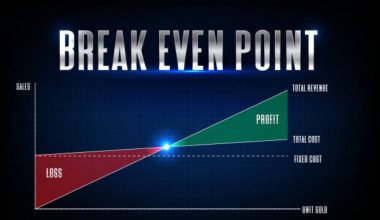Have you ever thought of how your business will elevate, simply by knowing when to sell inventory, collect receivables, and the time for your company to pay bills without any penalties? Now that’s something you don’t want to miss. However, for you to know the above, you will have to know the root. which is: the cash conversion cycle, the formula, the negative cash conversion cycle, the calculation, and how to calculate it!. This is an article you don’t want to miss out on, so sit tight and receive insight.
#1.What Is Cash Conversion Cycle (CCC)?
The cash conversion cycle (CCC) is a metric that shows how long it takes a company (measured in days) to change its investments in inventory and other resources into cash flows from sales. Moreover, The CCC, also known as the Net Operating Cycle generally aims to assess how long each net input dollar is locked up in the production. And sales process before it is turned into cash received.
Firstly, CCC is one of the quantitative indicators used to assess a company’s operations and management. A trend of declining or stable CCC values across various periods is a healthy sign. However, rising ones should prompt more study and analysis based on other considerations. Finally, It is important to remember that CCC only applies to certain industries that rely on inventory management and related processes.
The important fact about the cash conversion cycle (ccc)
First of all, The cash conversion cycle (CCC) is a measure that expresses the time it takes a company(in days). To convert its investments in inventory and other resources into cash flows from sales.
Secondly, This metric considers the time it takes to sell inventory, collect receivables, and the amount of time the company has to pay its obligations without incurring penalties.
Finally, based on the nature of corporate activities, CCC will differ by industry sector.
#2.Cash Conversion Cycle (CCC) Formula
Below are the cash conversion cycle formula and the meaning of each. let’s go!
- The Inventory that is available (DIO): is the average number of days it takes a company to convert its inventory into sales. DIO is the average number of days that a company keeps its inventory before selling it.
- Days outstanding sales (DSO): is the average number of days it takes a business to recover its receivables. As a result, DSO calculates the average number of days it takes a company to receive payment after a sale.
- Days Payable Outstanding (DPO): is the average number of days it takes a corporation to pay back its payables. As a result, DPO calculates the average number of days it takes a company to pay its invoices to trade creditors, i.e., suppliers.
We can put the formula into three stages to break it more down for a better understanding.
The first stage of the Cash Conversion Cycle formula is (DIO) days inventory outstanding, which calculates how long it will take the company to sell its inventory.
The second stage is (DSO) days sales outstanding which are to calculate the length of time it takes to collect cash from these sales.
The last stage is (DPO) days payable outstanding, it indicates how long it takes the company to pay its suppliers.
#3.What does it mean for Cash Conversion Cycle to be Negative?
A negative cash conversion cycle simply means that it takes you longer to pay your suppliers/bills than it does to sell your product and receive your money, implying that your suppliers fund your business.
In this case, the corporation effectively receives payment for the products it sells before it pays its suppliers for materials. Moreover, this can be so by selling products quickly, collecting payments from clients swiftly, and paying the company’s suppliers afterward. Hence, A negative cash conversion cycle is typically link with super-efficient online retailers.
Consequently, a negative Cash Conversion Cycle can hinder your capacity to develop and attract new clients. If your CCC is positive, both consumers and suppliers may want to do business with you.
#4.How to calculate Cash Conversion Cycle
Understanding everything involved in the calculation is usually the first step to take on how to calculate the cash conversion cycle.
To provide information for the calculation, you’ll need to refer to your financial statements, such as the balance sheet and income statement. Let’s look at how to calculate the three stages of the cash conversion cycle
The first stage:
Days Inventory Outstanding is the first component of the equation (DIO). This is the average time for inventory to be converted into finished items and sold
DIO = (Average Inventory divided by Cost of Goods Sold) multiplied by 365.
Your period’s average inventory (in value) equals the sum of your beginning inventory value and your ending inventory value ÷ 2.
(Initial Inventory + Ending Inventory) ÷ 2
The cost of products sold is as follows:
Purchases + Initial Inventory = Ending Inventory
Second stage
Days Sales Outstanding (DSO) is the average number of days that your accounts receivable (money owed to your business) are waiting to be collected.
DSO = (Accounts Receivable divided by Net Credit Sales) multiplied by 365.
This element’s accounts receivable are the average of your beginning and ending receivables.
(Starting Receivables + Ending Receivables) ÷ 2
Third stage
The Days Payable Outstanding (DPO) is the average time it takes a company to purchase from its suppliers on accounts payable (your company owes money) and pay for them.
DPO is an abbreviation for Ending Accounts Payable (Cost of Goods Sold divided by 365).
This element’s accounts payable are as follows:
(Beginning Payable + Ending Payable) ÷ 2
You can now calculate the CCC once you are done with the Cash Conversion Cycle calculation on the three of the formula’s needed elements.
Cash Conversion Cycle calculation (CCC)
DIO + DSO minus DPO
#5.How to Improve CCC
Companies can focus on any of the CCC’s three components to enhance (lower) it. However, Increasing DPO, decreasing DSO, or decreasing DIO will all lower the CCC. Companies can thereby improve the CCC in a variety of ways:
- Increase the rate at which inventory is converted into sales.
- Collect payment from customers as soon as possible.
- Increase the time it takes to pay suppliers.
Furthermore, it is vital to recognize that a company’s CCC does not exist independently. Because it defines how a company interacts with its suppliers and consumers. As a result, if a company delays paying its suppliers, those suppliers will suffer a negative impact on their cash conversion cycle due to an increase in their DSO. In some situations, suppliers may suffer cash flow challenges that may limit their capacity to fulfill orders on schedule.
As a result, purchasing firms may choose to reinforce their supply chains by utilizing early payment programs. And suppliers might thus obtain early payment on their bills from a third-party funder. While the company pays the invoice at a later date. Both the buyer and the supplier can benefit from this type of solution in terms of optimizing their working capital positions.
How Does Ccc Affect Cash Flow?
A working capital indicator called the cash conversion cycle (CCC), commonly referred to as the cash cycle, measures how many days it takes a business to convert cash into inventory and then back into cash through the sales process.
Does Ccc Correspond to an Operating Cycle?
The time it takes a business to cash out its inventory is measured by the cash conversion cycle, sometimes referred to as the net operating cycle or cash cycle. The cash cycle calculates how long it takes a business to turn each net input dollar utilized in the manufacture and sale of its goods into money that is deposited into its bank account.
What Makes a Solid Ccc?
A good CCC is one that is brief. You want to keep the cash conversion cycle as minimal as possible to run an effective and profitable firm. Ideally, you should strive to get it as near to 1 as possible since at that point, your company will have excellent liquidity and its operating capital won’t be locked up for protracted periods of time.
How Is Cash Flow Impacted by Ccc?
It gauges how quickly a business can turn over cash on hand into more cash on hand. The CCC accomplishes this by charting the transformation of cash, or capital investment, into inventory and accounts payable (AP), to sales and accounts receivable (AR), and finally back into cash.
What Does Working Capital Abbreviation Ccc Mean?
The length of time cash is held in working capital is determined by the cash conversion cycle (CCC). It measures the length of time it takes a business to turn cash outflows into cash inflows and, consequently, the length of time funding is needed to meet current obligations and maintain operations.
What Does a Negative Ccc Indicate?
Inventory is sold before you have to make a payment for it when there is a negative cash conversion cycle. Or to put it another way, your suppliers are paying for your company’s activities. For many organizations, a negative cash conversion cycle is ideal.
Conclusion
The cash conversion cycle (CCC) is simply a metric that that company uses to show how long it takes to convert its investments in inventory and other resources into cash flows from sales.
Cash Conversion Cycle FAQ
What is meant by cash conversion cycle?
The cash conversion cycle (CCC) is a working capital metric that expresses how many days it takes a company to convert cash into inventory, and then back into cash via the sales process.
What is a bad cash conversion cycle?
A negative cash conversion cycle means that their vendors are financing their operations.
what is a good cash conversion ratio?
A higher CCR (typically above 1.0x) is better than a lower CCR as it indicates a business is able to convert a majority of its earnings into cash.
How do you shorten the cash conversion cycle?
Companies can shorten this cycle by requesting upfront payments or deposits and by billing as soon as information comes in from sales. You also could consider offering a small discount for early payment, say 2% if a bill is paid within 10 instead of 30 days.
How do you calculate CCC in financial management?
- inventory period = 365 / inventory turnover.
- accounts receivable period = 365 / receivables turnover.
- operating cycle = inventory period + accounts receivable period.
- operating cycle = (365 / (cost of goods sold / average inventory)) + (365 / (credit sales / average accounts receivable))
How do you shorten the cash conversion cycle?
Companies can shorten this cycle by requesting upfront payments or deposits and by billing as soon as information comes in from sales. You also could consider offering a small discount for early payment, say 2% if a bill is paid within 10 instead of 30 days.
What is the difference between operating cycle and cash cycle?
While both cycles serve similar purposes, the operating cycle offers insight into a company’s operating efficiencies, while the cash cycle offers insight as to how well a company is managing its cash flow. Additionally, it’s often the case that one cycle impacts the other in practice.
- DAYS OF SALES OUTSTANDING- Everything You Need To Know
- Content marketing: Best Easy Guide (+ free course)
- Invoice Financing vs. Factoring: Overview, Differences & Similarities
- DIGITAL MARKETING: Definition, Types and, Strategies
- Cash Accounting: Best Cash Accounting Methods In 2022 (+ Detailed Guide)






